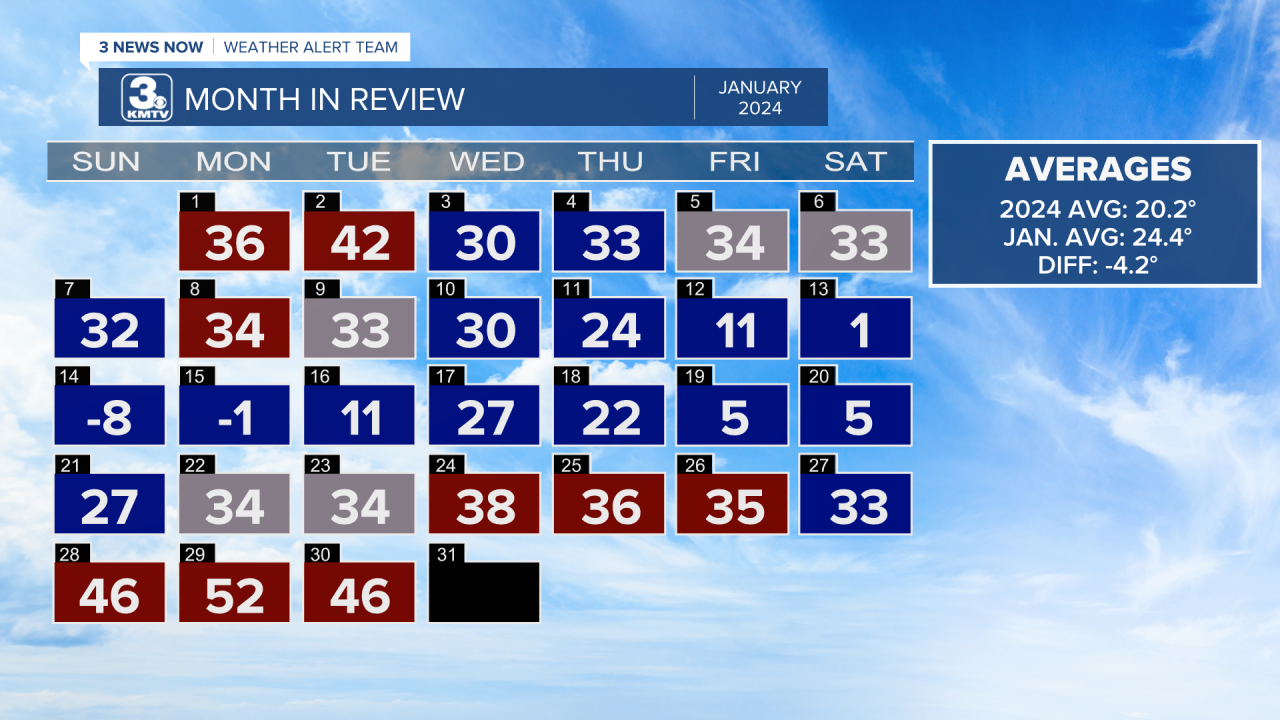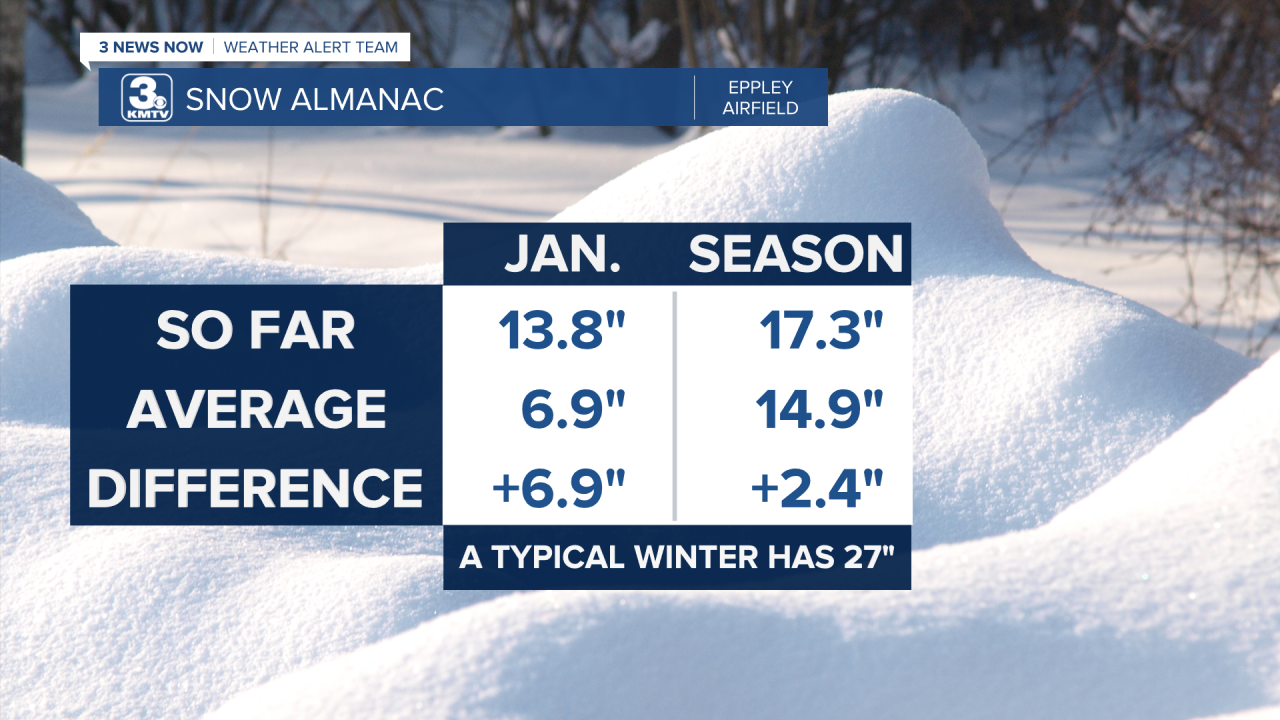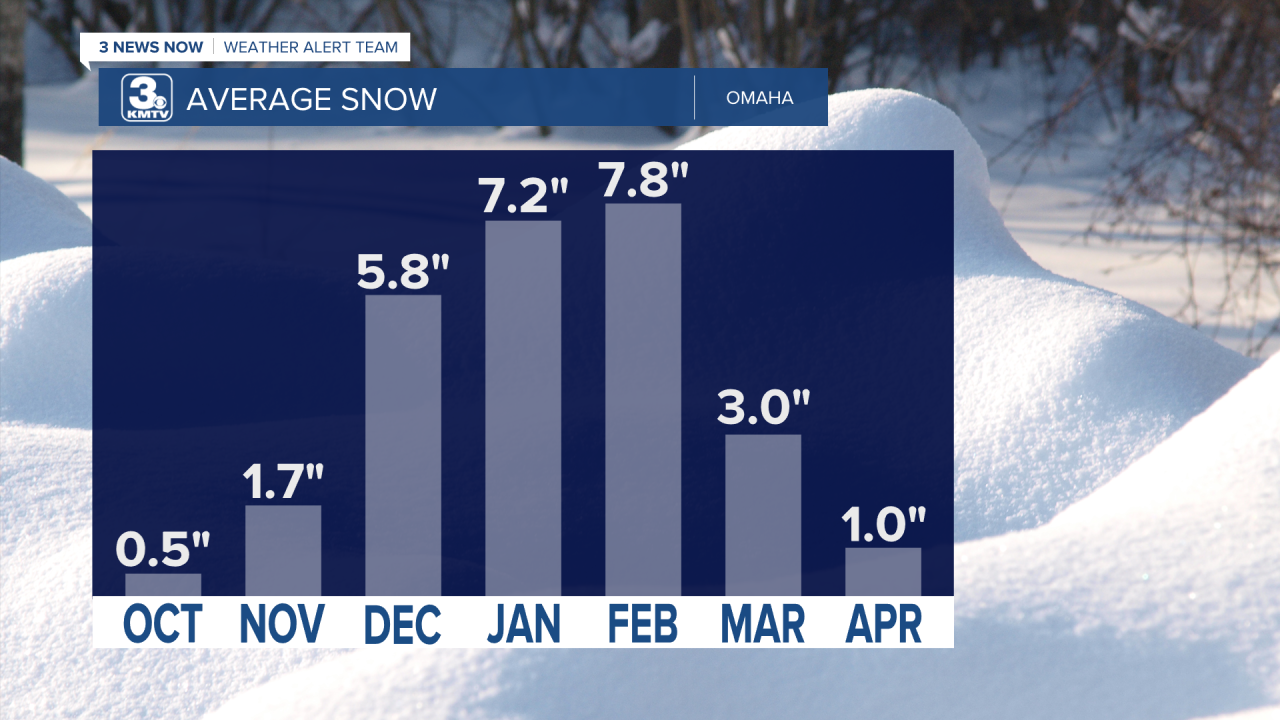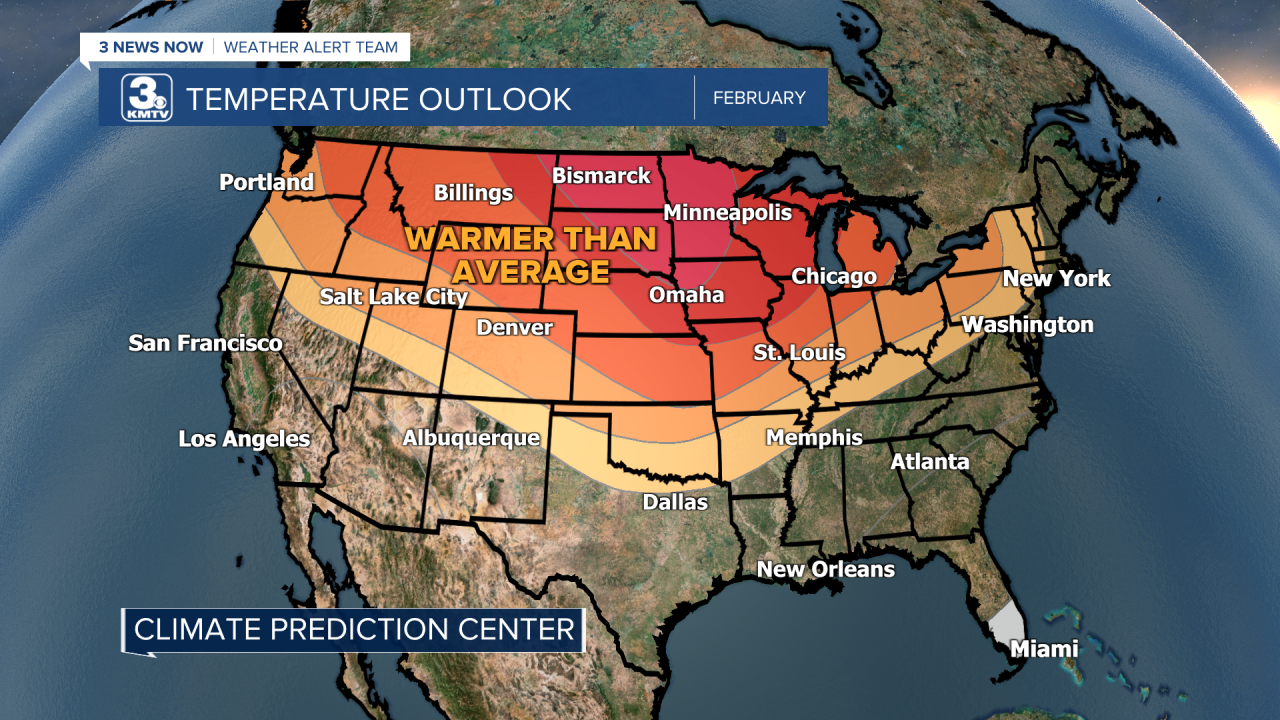After the past two dull January's, this year January did not disappoint with some active weather across eastern Nebraska into western Iowa. From several large snowstorms, arctic cold, and one quite foggy week it was certainly a long month. How does this month compare to others? What could February have in store? All that is below!
Let's start with the temperatures. January was really a temperature sandwich with a warmer start/end of the month with a very cold middle. For the month, the average high temperature for January is 33.6 degrees and the average low temperature is 15.2 degrees. The January average high in 2024 was 28 degrees, while the average low is 13.2. This averages out to 24.4 degrees, around 4 below the January average of 20.2. Due to the warmer stretches at the ends of the month, January wasnt too warm or too cold, it is the 55th coldest January on record since 1871.

However, when it was cold it was cold! The arctic stretch between January 13-16 constitutes the 4th longest stretch below 0 since data was being kept at Eppley Airfield in 1948. The only colder stretches were the cold snaps of December 1983 and 1989.

Where January did shine this year was in snow. Omaha Eppley officially picked up 13.8" of snow for the month, double the January average snowfall. In rankings, it was the 18th snowiest January in Omaha since 1871!

For more specific details about each snow event, check out these blog posts linked:
January 8-9 Snow storm

Across eastern Nebraska into western Iowa, snowfall totals were well above average for much of the region. Some spots in northeast NE into southwest IA saw over 2 feet of snow for the month!

Although we are in a warm stretch now, do not put that winter gear up yet as winter will return. In fact, February is historically the snowiest month for Omaha.

Looking ahead, the Climate Prediction Center (CPC) is forecasting the active weather pattern to return to parts of the central Plains starting during the second week of the month. The precipitation chances are above average for much of Nebraska, and equal chances to slightly dry over Iowa.

In terms of temperature, February could average out to be a warmer month. This does not mean that it won't be cold at times, but expect more highs in the 40s (even 50s) than the 20s going forward into the month.

How will the temperatures affect rain vs snow in our area? Time will tell. Pay attention to our short term forecasts for the latest on our February weather.


